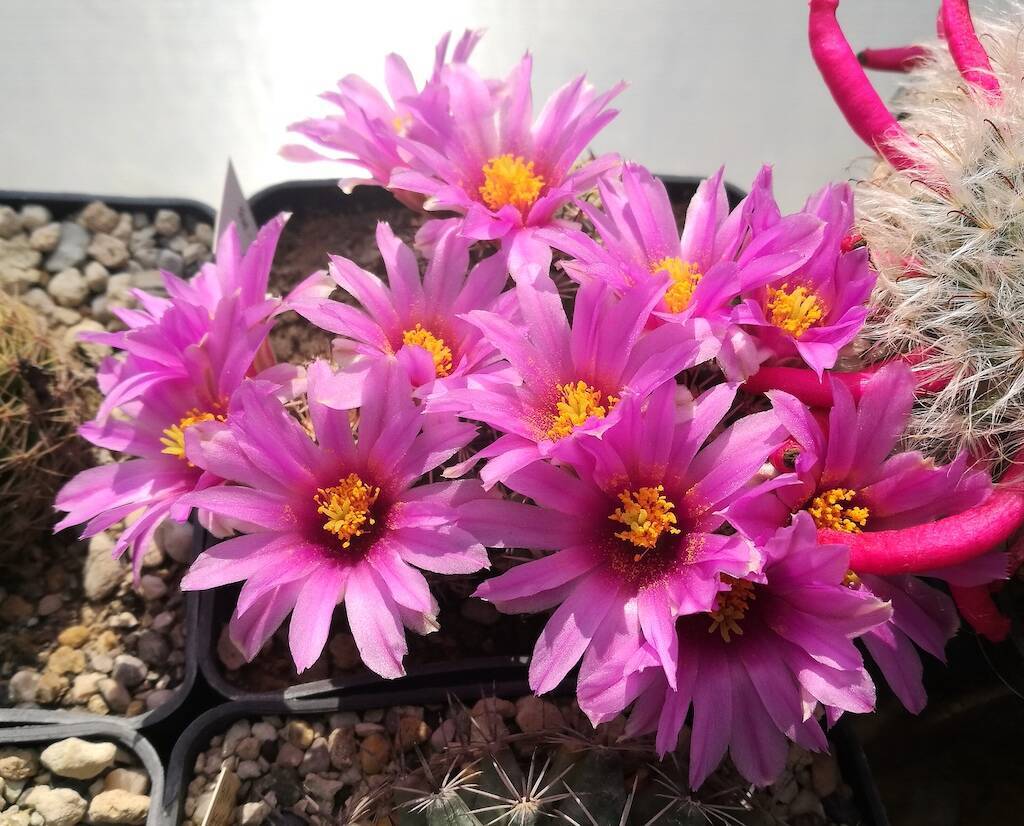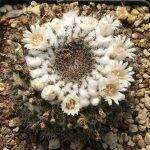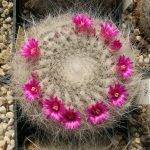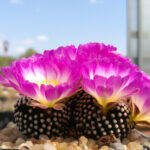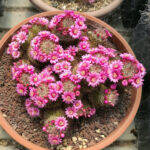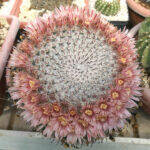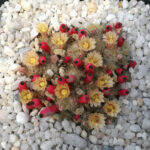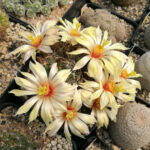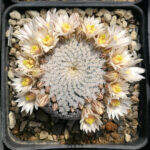Mammillaria is a very widespread genus of cacti and appreciated by succulent plant growers.
These cacti are easily recognizable by the splendid crown blooms around the apical part of the stem, which can be small or medium in size. These are cacti suitable for expert growers as well as novice growers. Some species, in fact, require a fair amount of experience (among these, Mammillaria luethyi, Mammillaria pectinifera, Mammillaria solisoides, Mammillaria lasiacantha, Mammillaria senilis, Mammillaria herrerae); other species are suitable for anyone (among these, Mammillaria elongata, Mammillaria bombycina, Mammillaria prolifera, Mammillaria polythele, Mammillaria uncinata, Mammillaria bocasana, Mammillaria perbella, Mammillaria mystax). The stems can appear globose, often clustered, very harmonious and in some cases covered with thick hair or very white thorns. (…)
The origin of Mammillaria: where these cacti grow
As regards distribution, Mammillaria are native to the southwestern area of the United States and Mexico, where they grow in many states such as Tamaulipas, Hidalgo, Chiapas, Colima, Puebla, Oaxaca, Baja California, San Luis Potosí, Durango . Some species can also be found in the Caribbean area, in Central America and in some regions in the north of South America (such as Colombia and Venezuela). The range of origin of this genus is therefore very vast and this is also why the Mammillaria have been able to evolve in different ways, giving rise to a large number of species and subspecies.
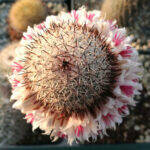
The main characteristic of the entire genus, regardless of the shape of the specimen, is the presence of tubercles, small “cones” (similar to breasts, hence the name of the genus, from the latin term “mammilla”) which characterize the stem and which can be more or less marked depending on the species. The areoles and spines form at the apex of the tubercles. Some Mammillaria produce a latex that may resemble that contained in Euphorbia. By virtue of this, the distinction between Mammillaria Galactochylus (which contain latex) and Mammillaria Hydrochylus (which does not contain latex) was once in use.
The forms and species of Mammillaria
The thorns can take on many shapes and in some species they are hidden by thick white hair (Mammillaria hahniana). You can have short and pointed spines, long and twisted spines (Mammillaria camptotricha), hooked spines (Mammillaria uncinata, M. bombycina, M. perezdelarosae), as well as “combed” spines (Mammillaria pectinifera) and robust and long spines (Mammillaria compressa, Mammillaria magnimamma). Many species, in particular those traced back to the so-called lasiacantha group, have pure white thorns that completely cover the stem and which can turn gray with age. Among the white-spined species, Mammillaria perbella, M. candida, M. magallanii, M. lasiacantha, M. lenti, M. klissingiana, M. humboldtii, M. albiflora, M. herrerae, M. plumosa deserve mention.
How Mammillaria are grown
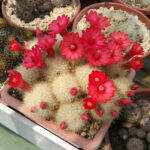
As regards cultivation, in general most of the species are also suitable for novice growers, since they are robust cacti and do not require any particular precautions compared to most cacti. Some species, however, can prove particularly challenging, to the point that their cultivation is recommended for those who have some experience with succulents. The particular sensitivity to water stagnation or the presence of taproot, which requires soils that are poor from an organic point of view and rich in aggregates and well-spaced watering.
Exposure and minimum temperatures
Regarding exposure, all Mammillaria want a lot of light for at least 6 hours a day, but only those whose stem is entirely covered with thorns (usually white ones) can stay in direct sun for many hours, as long as they are gradually accustomed to it starting from the end of March.
Mammillaria tolerate the cold well, as long as the soil is dry from the end of September.
Here you will find a PDF sheet entirely dedicated to the Mammillaria genus.
The English association The Mammillaria Society is dedicated to this type of cactus: anyone interested can take a look at their website at this link.
SUBSCRIBE TO THE SITE – If you liked this article, subscribe to the site to have unlimited access to all the contents for one year or three months depending on the formula you choose. Here you will find terms and conditions.
SUBSCRIBE TO THE NEWSLETTER – If you want to receive the free newsletter every time new content is published, fill in the fields at this link!
Photos of some species of Mammillaria
Correlated articles
- How to grow cacti: the handbook
- The section dedicated to soils
- Most frequent questions and doubts
- All cultivation cards in pdf
© The texts, videos, photos and graphic elaborations of the site “Il fiore tra le spine” are original material and are covered by copyright. It’s forbidden to reproduce them in any way.


